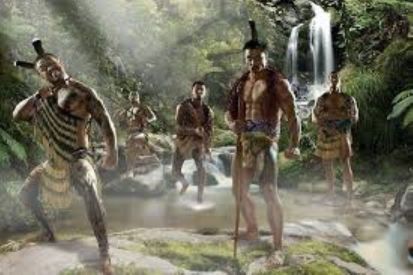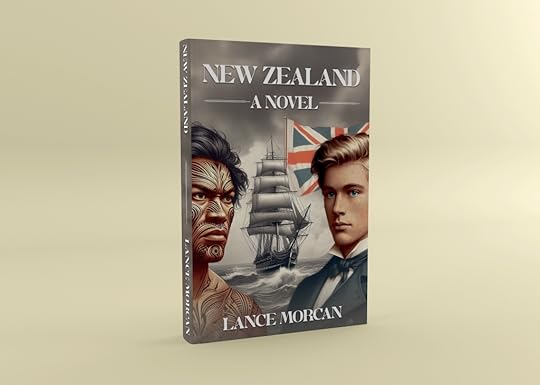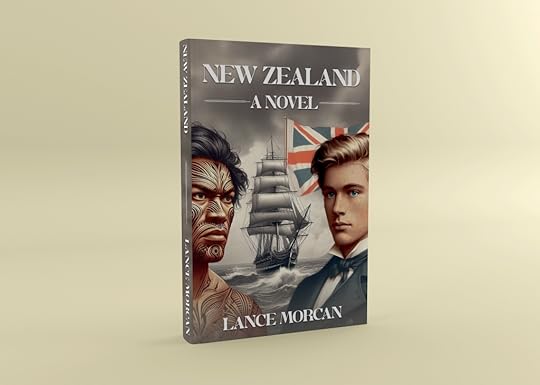Lance Morcan's Blog, page 13
December 5, 2024
Book review: ‘Louis Pasteur Condemns Big Pharma: Vaccines, Drugs, and Healthcare in the United States’
This new release book, by American author Stephen Heartland, should be compulsory reading – especially for parents of young children!

In this new age of pandemic predictions, vaccine mandates and mass medication, Louis Pasteur Condemns Big Pharma is extremely timely.
As co-writer of a book that was published pre-COVID-19 and which questions whether childhood immunizations are as safe as claimed, I was drawn to Stephen Heartland’s book because of its timeliness and its enigmatic title. Prospective readers should be aware the title’s clever wording soon becomes clear as present-day health practices are compared to those of bygone days.
The book’s message reflects the growing awareness of the wider public that the major players in the Medical Industrial Complex – Big Pharma in particular – are more interested in treating people with illnesses than in curing people. Clearly, there’s no profit to be had if everyone’s healthy.
While Heartland condemns the evil profits-before-cures approach to medicine, he refreshingly provides solutions, or potential solutions at least, for many shortcomings that dog America’s medical and pharmaceutical sectors.
For those sceptics who still believe the likes of the WHO, government health agencies, politicians, vaccine manufacturers, vaccine distributors and other players in the public health sector can be trusted, they need to read this book! Quickly! Before the next pandemic comes along…as it surely will!
Five stars!
★★★★★
-Lance Morcan
*
Louis Pasteur Condemns Big Pharma: Vaccines, Drugs, and Healthcare in the United States is available now via Amazon as a paperback and Kindle ebook. https://www.amazon.com/LOUIS-PASTEUR-CONDEMNS-BIG-PHARMA-ebook/dp/B0DD11313Y/
Goodreads link: https://www.goodreads.com/book/show/217442735-louis-pasteur-condemns-big-pharma
****************************************************************
November 29, 2024
Chief’s son stalked by warriors of enemy tribe in this excerpt from my upcoming epic ‘New Zealand: A Novel’
Moki’s way of hunting was as simple as it was unique. Unique to the Ngati Porou iwi [tribe] at least. It entailed throwing the spear over the head of a kereru [bush pigeon] or any bird for that matter. Tied to the spear was an ordinary fishing net, which, when thrown, trailed behind, entangling the startled bird before it could fly off. His grandfather had taught him the method as a boy, and now he rarely missed snaring a bird when the opportunity presented itself. Once snared, the bird would be decapitated and bled dry in preparation for cooking.
He sighted another kereru. It was perched upon one of the lower branches of a stately rimu tree and seemed oblivious to the approaching danger.
So focused was Moki on stalking the pigeon, he didn’t realise he himself was being stalked. He’d unknowingly crossed paths with five hunters of another iwi. They were members of the Ngati Kahungunu tribe who were long-time enemies of the Ngati Porou. They’d debated amongst themselves whether to kill Moki. Two of them had deemed it too risky as they were trespassing and wished to keep their presence secret, but the other three considered the lone hunter too tempting a target – and so the decision was made: to kill.

As Moki prepared to throw his spear at the kereru, he caught a movement in his peripheral vision. Some instinct prompted him to throw himself to one side. That saved his life, but the spear intended for his chest tore through the flesh in his thigh, its serrated tip lodging in the trunk of the very tree the kereru was perched upon. Grunting in pain, he leapt to his feet as the five hunters emerged from the undergrowth. He identified them immediately: their distinctive dreadlocks and tattoos along with their threadbare sealskin shawls made them unmistakably Ngati Kahungunu. All five looked young, lean and dangerous, and all had the bloodlust in their eyes as they closed in on their prey.
Moki thanked his guardian spirits he still had his spear. If his attackers had waited a moment longer he’d have thrown it at the kereru. That misjudgement cost the nearest hunter – the youngest of the five – his life. Moki thrust his spear’s tip into the hunter’s chest, impaling him. With his free hand, he grabbed the net tied to the spear, swung it about and snared another hunter in its mesh. The entangled hunter, who appeared to be the leader, desperately tried to disentangle himself. Tugging hard on the net, Moki pulled him to the ground and killed him with a savage blow from the club he now wielded. He turned too late to avoid another hunter, the biggest of the five, who crashed into him, knocking him over. They rolled over and over, holding each other tight and each trying to deliver an incapacitating blow with his club.
Fighting for his life, Moki was oblivious to the pain caused by the wound in his thigh or by other wounds he’d sustained. Blood flowed from a nasty scalp wound, causing him to blink rapidly in order to clear his vision. He was vaguely aware of the other two hunters who were awaiting their chance to skewer him with their spears. For the moment they couldn’t use their weapons for risk of accidentally killing their fellow hunter. Moki’s opponent held his club hand in a vice-like grip. Using his free hand, Moki grabbed his enemy by the testicles and squeezed tight. The big hunter screamed in agony and released his grip on his opponent’s wrist. Moki crushed the hunter’s skull with one thunderous swing of his club then leapt to his feet to face the remaining hunters.
The loss of three of their number in what seemed the blink of an eye gave the other two hunters pause for thought. They looked at each other as if to decide on their next course of action.
*
The paperback and Kindle ebook versions of New Zealand: A Novel will be launched before Christmas; the hardcover and audiobook versions will be published early 2025.
Watch this space!
******************************************************
November 28, 2024
Coming soon! NEW ZEALAND: A NOVEL – For lovers of historical fiction, historical romance, lust and adventure

New Zealand: A Novel spans almost 500 years and covers the respective discoveries of New Zealand by Pacific Islanders and Europeans. From the outset the two stories are interposed. It starts in the 1300’s with the departure of Islanders from Hawaiki in search of land far to the south.
The hardy, brown-skinned people who arrive here first call themselves Maori and they call their new home Aotearoa – land of the long, white cloud. The fascinating, eventful and sometimes violent lives of descendants of those first arrivals are traced through the centuries until the arrival of Europeans aboard Captain James Cook’s bark the Endeavour. Cook names the new land New Zealand.
Maoris call the white intruders pakeha. Their arrival heralds a clash of two vastly different ideologies as European civilization collides head on with indigenous culture.
The misunderstandings, tension and bloodshed that follow are relayed as seen through the eyes of one of the Endeavour’s youngest and most engaging crewmembers, Surgeon’s Assistant Nicholas Young, as the vessel embarks on its historic circumnavigation of the country.
Amidst the life-threatening challenges Nicholas faces at sea and on land, the young man finds true love when he meets Anika, a beautiful Maori wahine who steals his heart.
*
The paperback and Kindle ebook versions of New Zealand: A Novel will be launched before Christmas; the hardcover and audiobook versions will be published early 2025.
Watch this space!
********************************************************************
November 27, 2024
YOUNG MAORI IS FIRST OF HIS TRIBE TO SEE A TALL SHIP IN THIS EXCERPT FROM SOON-TO-BE- RELEASED ‘NEW ZEALAND: A NOVEL’
Alongside the same headland Captain Cook had named Young Nick’s Head aboard the Endeavour moments earlier, a young Maori sat looking out to sea, basking in the sun. The headland was on his right. Close by, on his left, was the outlet to a river that flowed past his iwi’s inland pa, which was located just half a mile upriver.

Moki was the oldest son of the rangatira of the Ngati Porou, the region’s predominant iwi, or tribe. He was also a direct descendant of Mahanga, the rangatira who had saved his people from being overrun by Te Arawa invaders more than two centuries earlier. His lineage could be traced back to the Hawaikan rangatira Hotu, who, with his son Kafoa, landed on this very beach aboard the Ronui waka some four hundred years earlier.
Barely eighteen, Moki was a blooded warrior, having claimed his first kill in a clash with warriors of another iwi more than a year earlier. Since then, he’d proven himself several times over, as a warrior and as a hunter, and despite his youth was considered a worthy successor-in-waiting to his father.
As the young warrior continued to daydream, something caught his eye on the horizon. At first, he thought it was a cloud. Then he wondered if he was hallucinating. Coming around the headland was what looked like a giant bird. Sunlight reflected off its huge white wings, which appeared to be flapping in the light breeze.
Alarmed, he jumped to his feet. He waved frantically at the fishermen out in the bay, but they were too busy fishing to notice him.
Moki, his heart pounding, fled into the bush that bordered the beach. He didn’t stop running until he reached the safety of his pa. The fortified village, located on a rise above the same river he’d been sitting alongside a short time earlier, was home to almost a thousand Ngati Porou villagers. Fifty wakas of all sizes rested along the riverbank – either in the water or high and dry on the bank itself. The river provided ready access to the freshwater that the unoccupied pa on the nearby headland lacked. In terms of its construction and fortifications, it was reminiscent of the coastal pa. Smoke from cooking fires spiralled up through openings in the rooves of at least half the pa’s whares, which numbered in the hundreds. The rangatira’s whare, the largest of the dwellings, occupied a commanding position on the marae alongside an even more impressive meeting house. Constructed primarily of timbers from the native totara tree, the meeting house displayed intricate carvings relating the history of the iwi going all the way back to Kafoa and Hotu. The carvings were replicated throughout the pa and on the bowsprits of the wakas as well.
“Papa!” Moki shouted as soon as he was within earshot of his father’s whare. “A great bird comes to attack us from over the sea!” Breathing hard, he repeated his warning twice over as his father and other villagers emerged from their dwellings.
*
The paperback and Kindle ebook versions of New Zealand: A Novel will be published on Amazon before Christmas.
Watch this space!
*****************************************************************
November 24, 2024
FREE OFFER FOR SUBSCRIBERS & NEW SUBSCRIBERS! Advanced reading copies (ARCs) available for ‘New Zealand: A Novel’
Attention lovers of books and films…If you subscribe to, or are already a subscriber, of Morcan Books and Films blog and wish to receive an ARC pdf of my soon-to-be-released historical adventure novel, D.M. me or email me at sterlinggatebooks@gmail.com and I’ll forward a pdf of the manuscript to you immediately.

This epic novel will appeal to lovers of historical fiction, historical romance and lovers of adventure novels. It spans almost 500 years and covers the respective discoveries of New Zealand by Maori and European. It starts in the 1300’s with the departure of Pacific Islanders from Hawaiki in search of land far to the south.
The Kindle ebook and paperback versions of the novel will be published on Amazon before Christmas. Hardcover and audio versions will follow in the New Year.
ARC offer ends December 8th.
–Lance Morcan – Co-author of Into the Americas, White Spirit, The Ninth Orphan and Fiji: A Novel.
******************************************************
November 21, 2024
Aboard the bark the Endeavour, land is sighted by Nicholas Young in this excerpt from ‘New Zealand: A Novel’
Nicholas wasn’t sure what woke him – a sudden flap of the billowing sails perhaps or the curses of a sailor who had tripped on the deck below. Then he saw it. Land! Off to the north-west. Now fully awake, he pushed himself to his feet, shouting, “Land ahoy! Land ahoy!”
His cries were like music to the ears of his crewmates. Cheers went up around the bark as others saw what Nicholas had seen. Some were convinced it must be part of the continent they were searching for. Cook knew better. Instinct told him this was the eastern shoreline of New Zealand, the land whose west coast Abel Tasman had discovered and charted the previous century.
On descending from the crow’s nest, Nicholas collected his extra rum ration. He would later share it around, reinforcing his status as one of the most popular members of the bark’s company.
While the men celebrated, the captain reviewed his written orders. Those orders stipulated that upon reaching the unexplored southern land he was to explore as much of its coast as the condition of his vessel and health of his crew would allow.
#
So unfavourable were the winds, it was two days before the Endeavour was able to close with the coast. The sight that greeted the men was worth the wait as the shoreline was as picturesque as any they had seen in their travels to date. Sunshine pierced the clouds, reflecting off a sandy surf beach. A prominent headland marked the southern entrance to a sheltered bay. Its steep, white cliffs were similar to England’s white cliffs of Dover except for the line of pohutukawa trees that ran along the clifftops. Those same trees would bloom in a little over two months’ time, displaying their scarlet flowers in a festival of colour.

Cook named the headland Young Nick’s Head in recognition of the crewmember who first sighted it.
Standing by the portside rail, the captain studied the headland through his telescope. Manmade structures atop it offered the first sign that the land was inhabited. He was looking at a Maori pa site constructed by one of the region’s native tribes. Its stockades comprised rows of long, pointed poles, giving the headland a fort-like appearance. Behind them were whares, which didn’t appear to be occupied. In front of the stockades were terraces, which accommodated deep manmade trenches. To Cook’s critical eye, the headland looked like it could be easily defended against invaders: it was a natural fortress.
The captain turned his attention to the bay. Satisfied it would offer safe anchorage he lowered his telescope and turned around to look for his bosun Robert Molyneaux. He sighted the Lancashire man standing by the port-side rail. “To shore, Mister Molyneaux, and see that all hands are on deck!”
“Aye, Captain,” the bosun said. “To shore it is.” He hurried off, barking orders as he went, to ensure his master’s orders were carried out.
*
The paperback and Kindle ebook versions of ‘New Zealand: A Novel’ will be published on Amazon before Christmas; the hardcover and audiobook versions will follow in the New Year.
Watch this space!
************************************************************
November 20, 2024
Aotearoa echoes to the sounds of war and cannibalism quickly becomes part of Maori culture in this excerpt from ‘New Zealand: A Novel’
For the first time, the hills and shores of Aotearoa echoed to the sounds of war. As competition for land and food resources increased, inter-tribal fighting became the norm. The inevitable result was war on a scale never before seen in Kupe’s land. Fighting was hand-to-hand, vicious and bloody.

One ugly side-effect of the conflict was cannibalism.
Eating the flesh of enemies provided a new source of meat as well as having symbolic significance for the victors. Cannibalism quickly became part of Maori culture, just as it had throughout the islands of the South Pacific. The losers in warfare accepted they would end their days in slavery or on the cooking fire, or probably both. Slaves provided labour for hard manual work and were a source of food when their meat-starved captors were hungry.
Feuds erupted between iwis which had previously lived side by side in peace. As rivalries intensified, bloodshed followed. Given the Maori preoccupation with mana [prestige] any slight was an invitation to violent retribution. The concept of mercy was unknown and the cycle of revenge that resulted was known as utu, or blood vengeance.
Utu would become the law by which Maori lived. It would survive, indeed flourish, until well into the nineteenth century.
Apera’s Te Arawa iwi had consolidated their tribal base at Rotorua, the inland whakatikatikatanga [settlement] located on the shores of the same thermal lake where they’d resided since relocating from coastal Maketu. But like most tribes of the day they needed more land for their ever-expanding population. It was because of this their rangatira decided to lead a sizeable war party down the east coast in search of slaves and new territory.
The decision to make war was not taken lightly. The Te Arawa had long been insulated from the feuding that was now common amongst coastal tribes. Increasing demand for new territory had recently seen their own tribal lands come under threat. Fortunately, their superior numbers had enabled them to repel any invaders. However, this was not enough to ensure their survival. More land, slaves and riches were needed.
Winter was always the worst time to travel or to make war. The land was cold, and food was at its scarcest, but the Te Arawa warriors chose to make their move in the middle of winter when their enemies would likely be least prepared.
*
The paperback and Kindle ebook versions of ‘New Zealand: A Novel’ will be published on Amazon before Christmas; the hardcover and audiobook versions will follow in the New Year.
Watch this space!
****************************************************************
November 19, 2024
Abel Tasman “discovers” the new land in this excerpt from ‘New Zealand: A Novel’
Aboard his flagship, the Heemskerck, Captain Abel Tasman (pictured) was feeling every one of his thirty-nine years as his vessel ploughed eastwards through heavy seas in the Southern Ocean and yet another squall left him soaked to the skin.

It was December 13, 1642. Nine days had passed – nine long days and sleepless nights – since the Heemskerck and her smaller companion ship the Zeehaen, an armed hauler vessel, departed an island he’d named Van Diemen’s Land. The Dutch master mariner had no way of knowing the ocean he now sailed would one day be known as the Tasman Sea.
Tasman stood on the Heemskerck’s quarterdeck, riding the rolling motion with the ease of a man who had spent all his working life at sea, and praying he’d sight land soon. He thought he glimpsed land directly ahead.
A cry went up from the ship’s crow’s nest, confirming he hadn’t imagined it. “Turn to port!” the captain shouted to his bosun. He had just sighted waves crashing onto a rocky shoreline, a scary sight even for an experienced seaman.
“Ja, Kapitein!” the bosun responded before relaying Tasman’s orders to his subordinates.
The Heemskerck responded slowly in the heavy seas and several tense minutes passed before she was safely sailing north and parallel to the coast. At the same time, the squall eased, and the clouds and mist lifted to reveal a rugged, forbidding coastline. Dark, green, bush-covered hills rose steeply beyond the rocky shore, and beyond them fleeting glimpses of majestic alps could be seen through breaks in the cloud. There was summer snow on some of the higher peaks.
Tasman was immediately struck by the majesty of the new land he’d discovered. It seemed prehistoric, but beautiful at the same time.
It was some moments before it dawned on Tasman that he had achieved his expedition’s main goal: he’d discovered the Great Southern Continent, or so he believed, for he was convinced the shoreline he was now looking at was that continent’s western edge. The realisation almost brought him to tears, and thoughts of great reserves of gold and other treasures flashed through his mind. He wondered whether the land was inhabited. First impressions were that this was virginal land, uninhabited and unoccupied. If he was right that would mean Holland would have unobstructed and unrivalled access to its resources.
Looking at the coastline beyond the starboard rail, he murmured, “I name this new land Nieuw Zeeland.”
Tasman would soon learn – to his cost – that the land he’d discovered was occupied by warlike peoples who called themselves Maoris. However, he would go to his deathbed mistakenly believing the new land was the Great Southern Continent. It would be well into the following century before his countrymen learned Nieuw Zeeland was an island nation roughly the size of England.
*
The paperback and Kindle ebook versions of ‘New Zealand: A Novel’ will be published on Amazon before Christmas; the hardcover and audiobook versions will follow in the New Year.
Watch this space!
****************************************************************
November 18, 2024
Early Maori face challenges in new land in this excerpt from ‘New Zealand: A Novel’
The early days in Aotearoa were difficult days for those Islanders who survived the epic sea voyage from their Hawaiki homeland. In the first year more deaths further reduced their number although those were partly offset by the births of several babies. And so far, the land of the long white cloud was living up to its name: it was cloudy. With the clouds came rain and cooler temperatures, and the new arrivals shivered as they adapted to life in this foreign place.

Food, or lack of it, was the most crucial issue facing them. The abundant food sources of the islands of the South Pacific were sadly lacking. There was no sign of the pigs, turtles, bananas, coconuts, kumaras or yams they were familiar with. Wild berries from the hīnau, karaka and other native trees were the only fruits available. Though there was a profusion of fish and bird life, new fishing and hunting techniques had to be mastered before those creatures could be added to the recent arrivals’ diet in any quantity.
Hotu remained staunch. The rangatira knew there’d be hardships to overcome before his people would be at one with the land. He was sure Kupe’s followers had faced the same problems all those centuries ago. Whether they had survived was another story.
So far not one sign of another human being had been found. Not even a solitary footprint.
The first hunting expedition into the unexplored interior provided a much-needed boost for flagging spirits. Concerned they’d seen no pigs, or any animals for that matter, along the coast, Hotu led a dozen hunters inland. Their number included Kafoa who made up for his tender age and inexperience with enthusiasm. The hunters never found pigs, but what they did find soon proved to be as good.
On the flatlands and rolling hills between the coast and the mountains, they discovered mobs of giant birds. The biggest of these emu-like creatures stood taller than the tallest man, and, Hotu observed, they had plenty of meat on their bones. Better still, like some other birds in this land, they were flightless. With no natural predators, until now, they had no need of wings. The moa, as they came to be called, were timid and easily killed. Moas quickly became a staple part of their hunters’ diet and would remain so until their extinction less than two centuries later.
*
The paperback and Kindle ebook versions of ‘New Zealand: A Novel’ will be published on Amazon before Christmas; the hardcover and audiobook versions will follow in the New Year.
******************************************************
November 15, 2024
Coming soon! NEW ZEALAND: A NOVEL

This epic, historical adventure-romance is a tale of conflict, lust and adventure. It spans almost 500 years and covers the respective discoveries of New Zealand by Pacific Islanders and Europeans.
Watch this space!
***************************************************************



